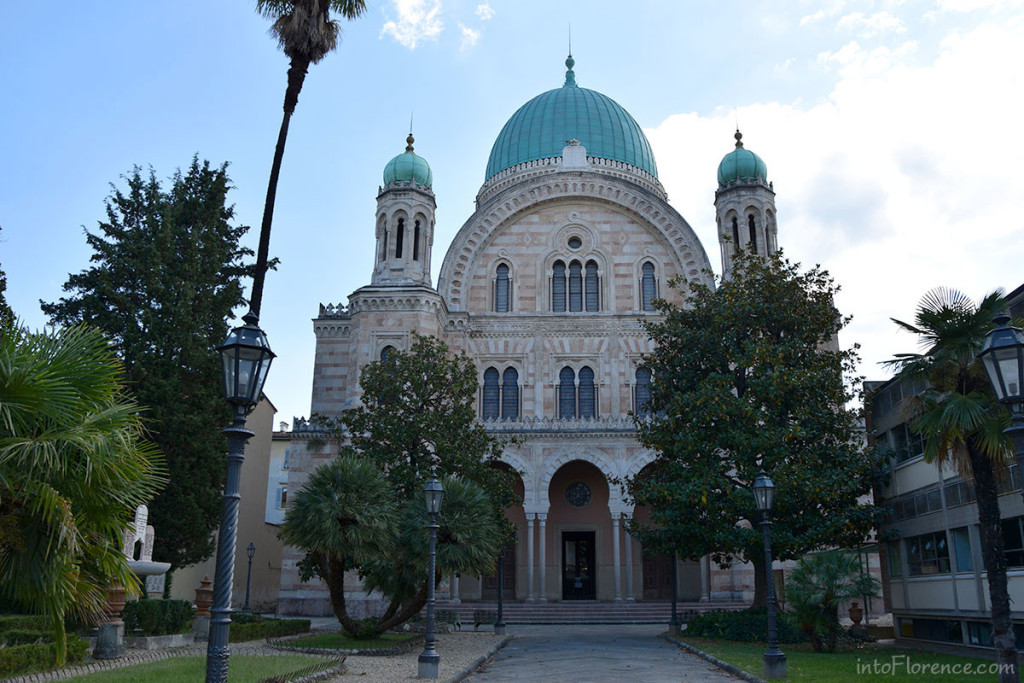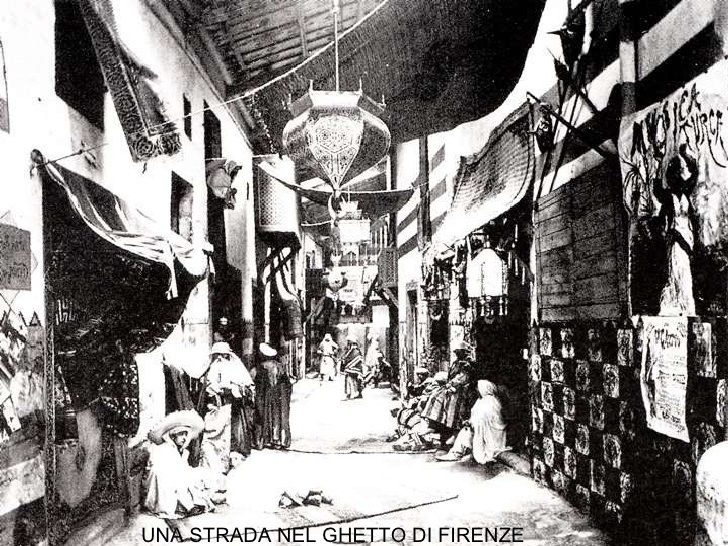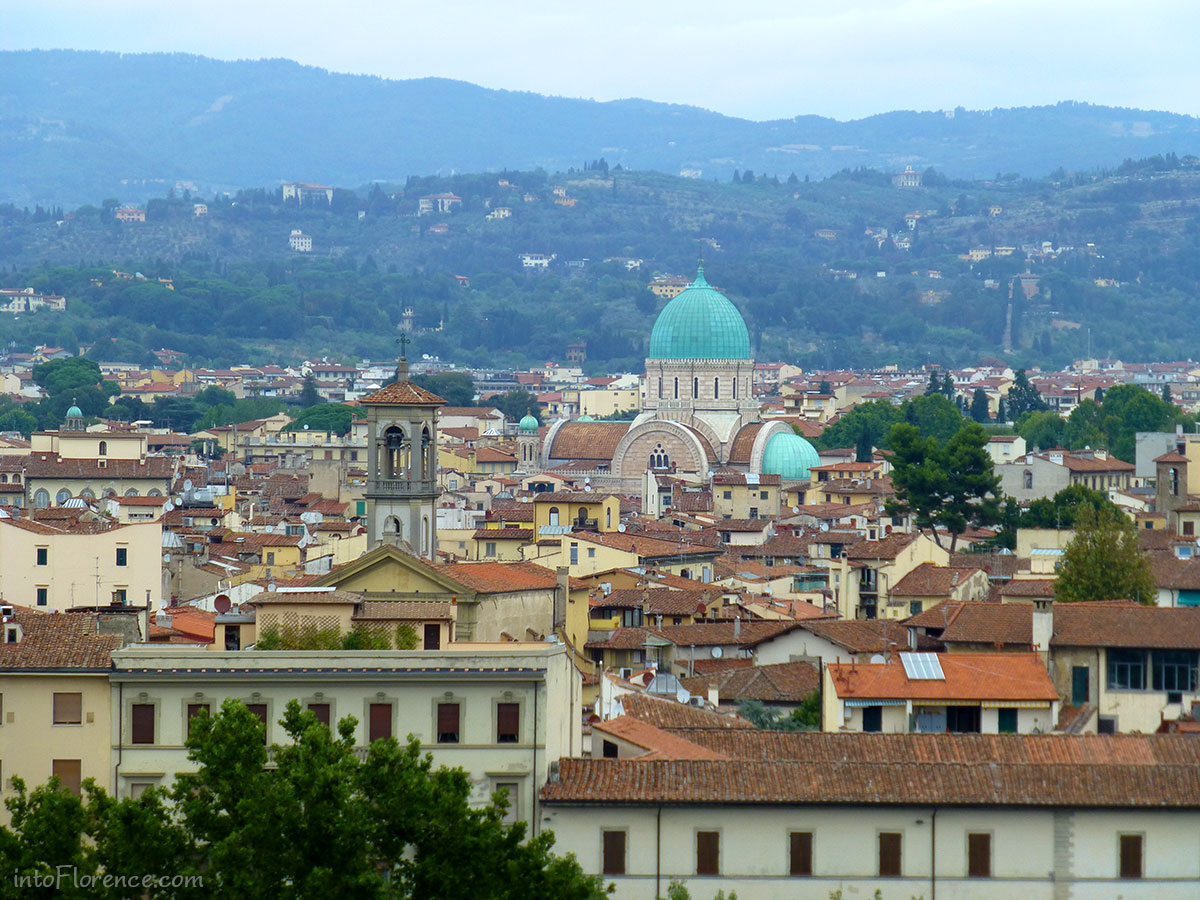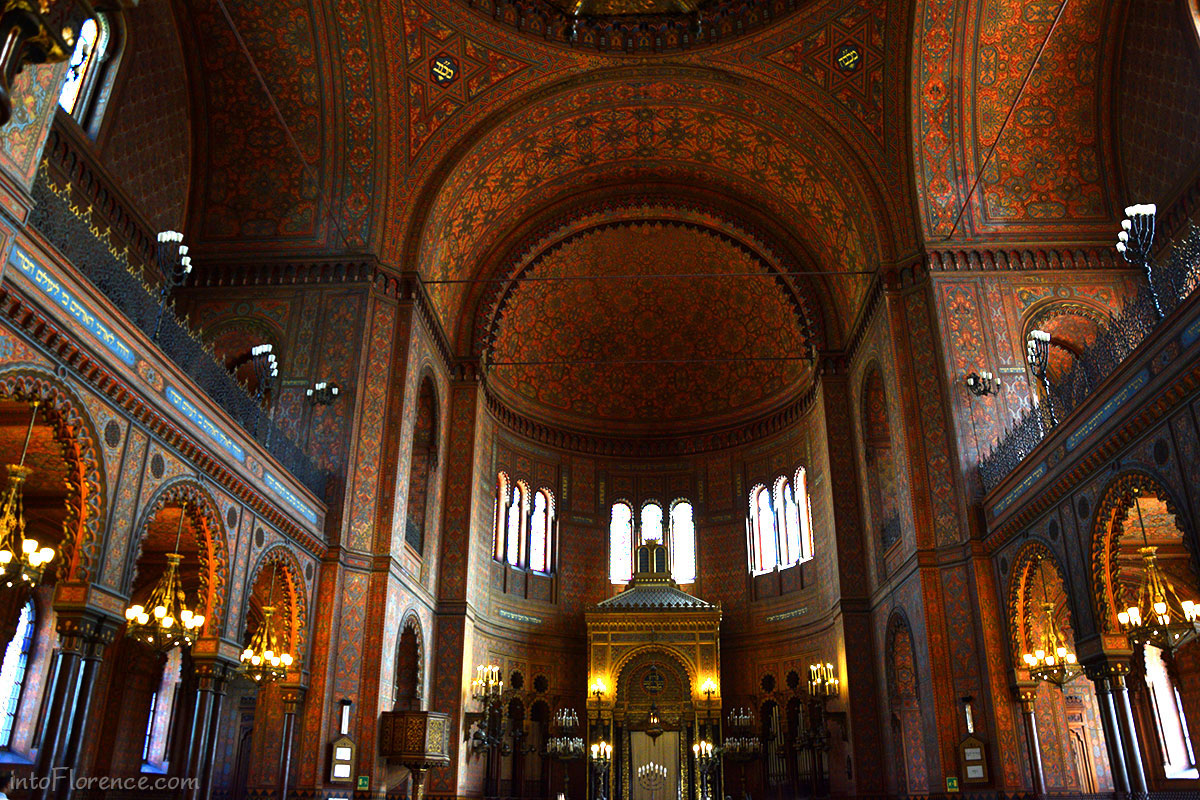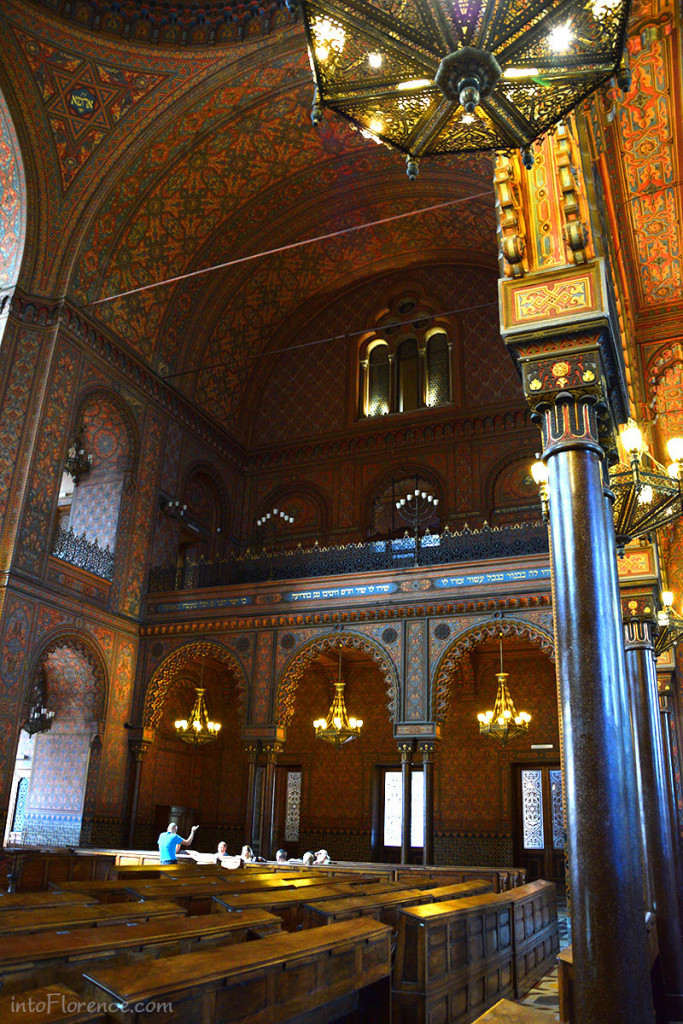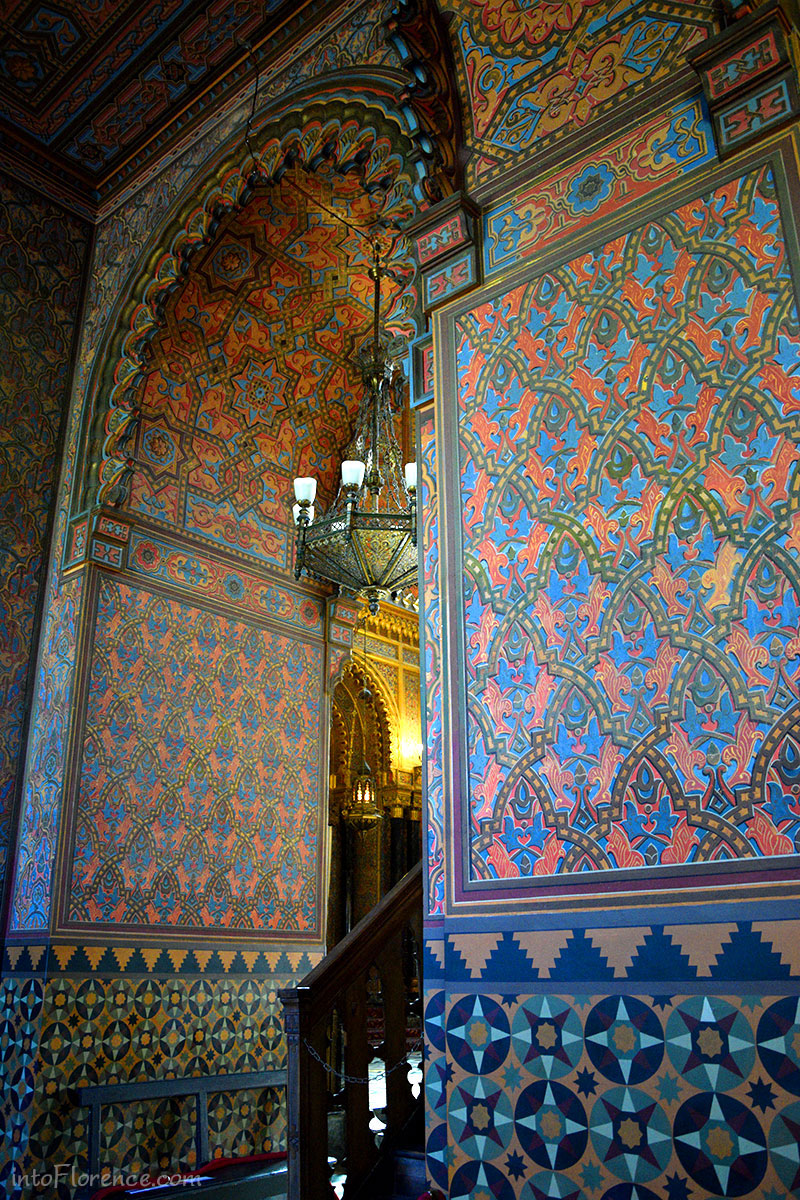Florentine Jews found a new spiritual home in this impressive synagogue, after the ghetto, that had locked the Jews in for three centuries, was torn down in the 19th century. The Jewish ghetto was located near to where Piazza della Repubblica is situated today. It consisted of a vast maze of alleys, buildings and houses that grew taller and taller over the centuries due to lack of space.
In the second half of the 19th century the city counsel decided it was time to open the gates of the ghetto and demolish the dilapidated blocks of houses. With the unification of Italy, the Jews were given Italian citizenship and they were finally allowed to live in a location of their own choosing.
A new Jewish neighborhood emerged just north of Via dei Pilastri and with that a new synagogue was needed.
The construction of the synagogue, designed by Marco Treves, was in large part financed by David Levi, an important member of the local Jewish community. In just six years the construction of the synagogue was completed and the temple opened its doors in 1882.
I visited the synagogue under the expert guidance of the Jewish city guide Francesca Rachel Valle, who attends the weekly service herself and therefore knows all about her temple, the Jewish faith and the history of the Jewish community in Florence.
The building is an interesting mix of architectural styles and Moorish and Florentine influences are clearly recognizable. Striking is the large green dome that clearly stands out in the Florentine skyline.The dome is made of red copper but over the years it turned green due to oxidation and as a result it stands in beautiful contrast with the other red domes of the city.
In contrast to the exterior of the building, which is decorated in soft colors, the amount of color that comes at you upon entering is simply overwhelming. Every centimeter of the interior is decorated with a geometric pattern painted in bright red, blue and yellow that creates a warm and exotic atmosphere. The design of the synagogue however is very similar to that of a Christian church with its cross shape consisting of nave and transept.
During WWII, the Nazis used the synagogue as a garage to store their cars and motorcycles. When the troops retreated north in 1944, they tried to blow up the building but fortunately only a portion of the wall on the right side was destroyed and the rest of the building was spared.
More than 20 years later in 1966, during the last big flood of Florence the water level in the synagogue rose up to several meters high and even a thorough cleaning could not prevent that in several places a dark line remained imprinted on the painted walls. Unfortunately dozens of precious and priceless Torahs were lost due to water damage and they were buried in the cemetery according to Jewish tradition.
The Jewish Museum located on the two upper floors of the synagogue provides a wealth of information about the history of the Florentine Jews, Jewish faith and religious celebrations such as the Sabbath. It holds a large collection of Jewish religious and ceremonial objects including a Torah handwritten on parchment that according religious regulations should be made only from the skin of a kosher bovine.
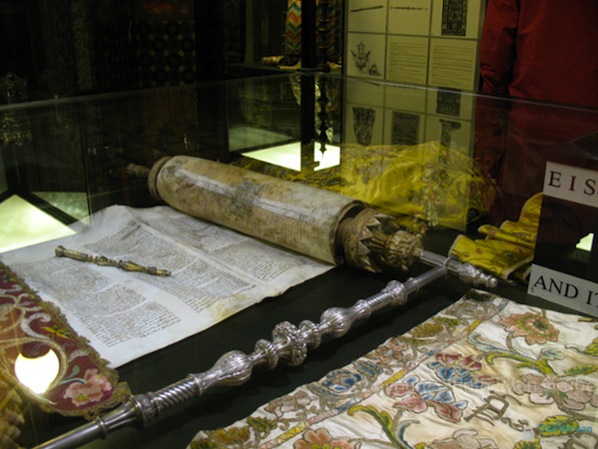
The synagogue is surrounded by a large garden with exotic plants including a couple of pomegranate trees that were brought over from Israel. The pomegranate is traditionally eaten during the Jewish New Year celebration. A prominent spot in the garden is reserved for the memorial wall with the names of the Florentine Jews that were deported by the Nazis in WWII and never returned.
Our guide Francesca spoke with much passion about her temple and seamlessly alternated historical facts with her own personal stories. She told us how she celebrates Friday night with her daughter while her Catholic husband eats his dinner out with friends and how the mandatory rest during the Sabbath complicates her life sometimes because it is not allowed to conduct any kind of activity Friday after sunset. Which means for example that she has to prepare food for two days, but it also means that she is not allowed to press the stop button in the bus on her way to the synagogue and it often happens that she has to walk several stops back because nobody got off at her stop.
Frankly, I didn’t know much about the Jewish faith but thanks to guide Francesca, I have learned a lot about a very interesting piece of Florentine history and about one of the major world religions.
Ignorance leads to lack of understanding and intolerance and personally I find it far more interesting to explore the similarities between religions than to emphasize the differences.
The synagogue is open for visitors from Sunday to Friday; take notice that for security reasons it is not permitted to take metal objects inside, that includes mobile phones and cameras. Carriers of pacemakers and pregnant women are also not allowed inside the metal detector. There are lockers available to store bags securely. More information on the website of the synagogue.
Synagogue of Florence
Via Farina, 6
For more information about a tour of the synagogue with Francesca Rachel Valle in Italian or English you can contact her on via her website or directly by email at francesca.valle@yahoo.it.
The tour I did was organized in collaboration with Beemyguide, Tour sharing.
[wpgmza id=”23″]
My gratitude to the synagogue for giving me special permission to take photos.
PHOTO GALLERY
Click on the photos for a larger view.

